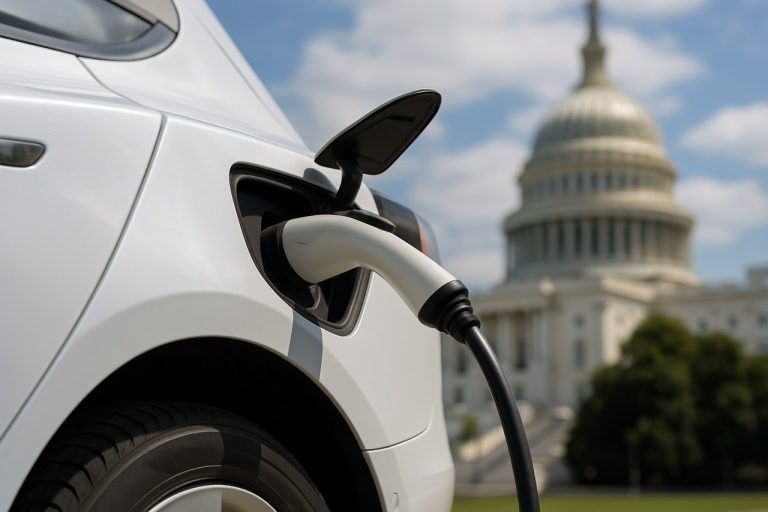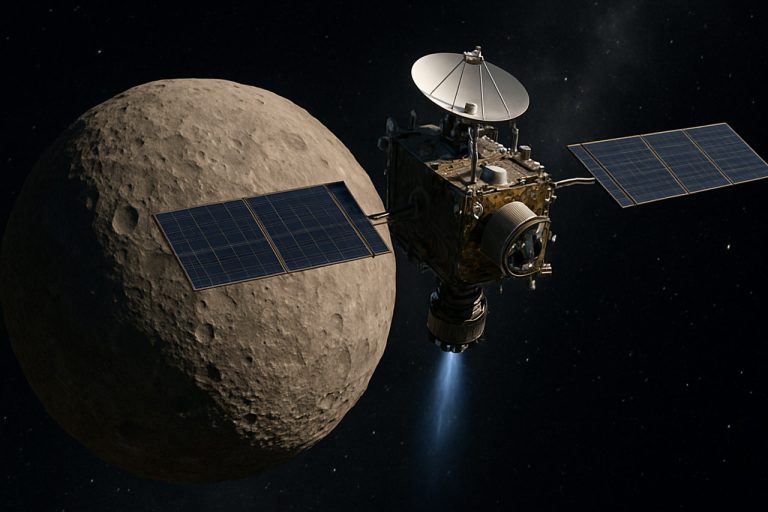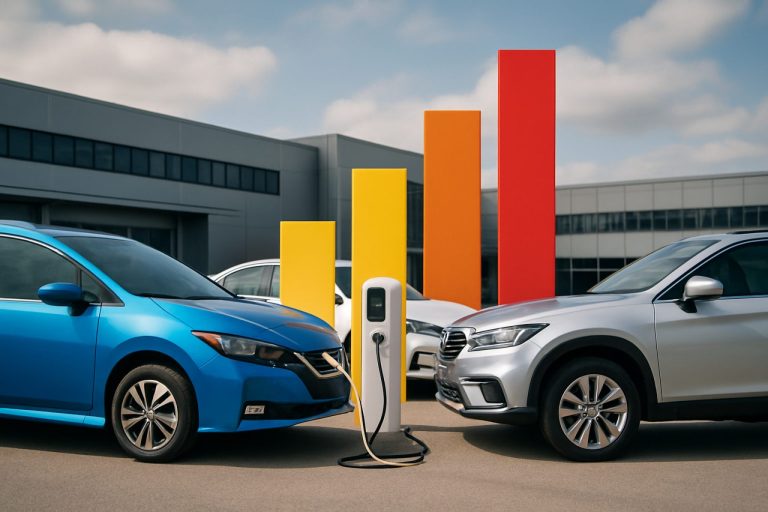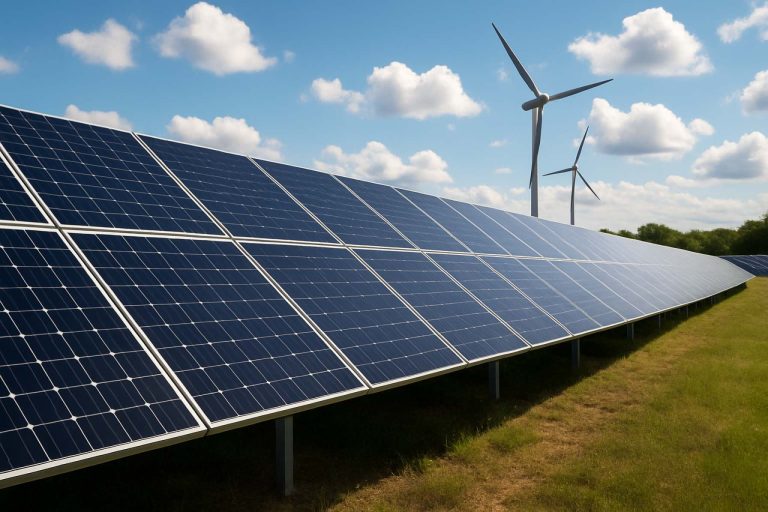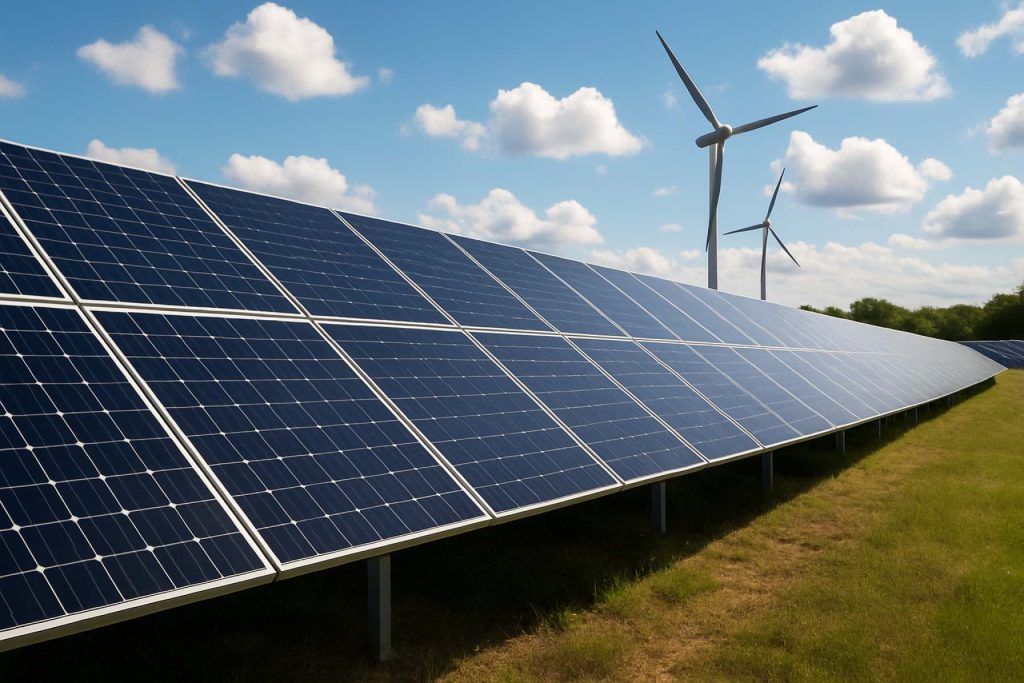
How Clean Energy Tax Credit Policies Will Reshape the Industry in 2025 and Beyond: A Deep Dive into Subsidy Dynamics, Market Acceleration, and Technology Shifts. Discover What’s Fueling the Next Era of Renewable Investment.
- Executive Summary: The State of Clean Energy Tax Credits in 2025
- Policy Landscape: Key Tax Credit Programs and Legislative Updates
- Subsidy Dynamics: Mechanisms, Eligibility, and Funding Trends
- Market Growth Forecast: 2025–2030 CAGR and Investment Projections
- Technology Impact: Innovations Accelerated by Tax Incentives
- Regional Analysis: Leading Markets and Policy Adoption Rates
- Industry Stakeholders: Roles of Utilities, Developers, and Manufacturers
- Case Studies: Success Stories from Official Industry Sources
- Challenges and Risks: Policy Uncertainty and Market Volatility
- Future Outlook: Strategic Recommendations and Long-Term Scenarios
- Sources & References
Executive Summary: The State of Clean Energy Tax Credits in 2025
In 2025, clean energy tax credit policy and subsidy dynamics are at the forefront of global energy transition strategies, with governments and industry stakeholders intensifying efforts to accelerate decarbonization. The United States continues to lead with the implementation of the Inflation Reduction Act (IRA), which has extended and expanded a suite of tax credits for renewable energy generation, energy storage, clean hydrogen, and advanced manufacturing. These incentives, including the Investment Tax Credit (ITC) and Production Tax Credit (PTC), are designed to provide long-term certainty for project developers and manufacturers, fostering a robust pipeline of clean energy projects through at least 2032. The IRA’s domestic content and prevailing wage requirements are also shaping supply chain decisions and labor practices, with major manufacturers such as GE Vernova and First Solar ramping up U.S.-based production to maximize eligibility for these credits.
In the European Union, the Green Deal Industrial Plan and the Net-Zero Industry Act are driving a parallel push for clean energy investment, with member states deploying a mix of direct subsidies, tax incentives, and regulatory streamlining. The EU’s focus on strategic autonomy and supply chain resilience is prompting companies like Siemens Energy and Vestas to expand European manufacturing and R&D capacity. Meanwhile, China maintains its position as the world’s largest clean energy market, with state-backed incentives and subsidies supporting domestic leaders such as Goldwind and LONGi Green Energy in scaling up solar, wind, and battery production.
The competitive landscape is further shaped by evolving eligibility criteria, local content rules, and the phasing out of legacy fossil fuel subsidies. In the U.S., the Treasury Department’s ongoing guidance on IRA implementation is closely watched, as it determines the practical impact of tax credits on project economics and supply chain localization. In the EU, the flexibility granted to member states under state aid rules is leading to a patchwork of national incentives, with some countries moving faster than others to attract clean energy investment.
Looking ahead, the outlook for clean energy tax credits and subsidies remains positive, with policy stability and escalating climate targets expected to drive continued growth in renewable deployment, manufacturing, and innovation. However, the sector faces challenges related to policy harmonization, supply chain bottlenecks, and the need for grid modernization, all of which will influence the effectiveness of tax credit policies in the coming years.
Policy Landscape: Key Tax Credit Programs and Legislative Updates
The policy landscape for clean energy tax credits and subsidies in 2025 is shaped by a combination of longstanding federal incentives, recent legislative updates, and evolving implementation guidelines. The United States continues to prioritize clean energy deployment through a suite of tax credits, with the Internal Revenue Service (IRS) administering the majority of these programs. The Inflation Reduction Act (IRA), enacted in 2022, remains the cornerstone of federal clean energy policy, with its provisions set to influence the market well into the late 2020s.
Key tax credits include the Investment Tax Credit (ITC) and the Production Tax Credit (PTC), both of which have been extended and expanded under the IRA. The ITC, which provides a credit for a percentage of the cost of installing solar, wind, and other eligible clean energy systems, is scheduled to remain at 30% through at least 2032, subject to compliance with prevailing wage and apprenticeship requirements. The PTC, which offers a per-kilowatt-hour incentive for electricity generated from qualifying renewable sources, has similarly been extended and now includes new eligible technologies such as energy storage and certain biogas projects.
A significant development in 2025 is the implementation of “direct pay” and “transferability” provisions, allowing tax-exempt entities and smaller developers to monetize credits more easily. This is expected to broaden participation in clean energy projects, particularly among public utilities and non-profit organizations. Major industry players such as NextEra Energy and Duke Energy are actively leveraging these incentives to accelerate renewable project pipelines, while manufacturers like First Solar and Tesla are expanding domestic production to meet domestic content requirements embedded in the new rules.
The IRS continues to issue guidance on eligibility, bonus credits (for projects in energy communities or using domestic content), and compliance, with further clarifications expected throughout 2025. State-level programs are also evolving, with states like California and New York layering additional incentives atop federal credits to drive local deployment.
Looking ahead, the outlook for clean energy tax credits remains robust, with bipartisan support for clean energy manufacturing and deployment. However, the policy environment is subject to potential changes depending on the outcome of the 2024 presidential and congressional elections. Industry stakeholders are closely monitoring legislative developments and IRS rulemaking to optimize project financing and ensure compliance with evolving requirements.
Subsidy Dynamics: Mechanisms, Eligibility, and Funding Trends
The landscape of clean energy tax credits and subsidies in 2025 is shaped by a combination of ambitious climate targets, evolving eligibility criteria, and dynamic funding mechanisms. Governments, particularly in the United States and European Union, are leveraging tax incentives and direct subsidies to accelerate the deployment of renewable energy technologies, electric vehicles (EVs), and energy storage solutions.
In the United States, the Inflation Reduction Act (IRA) continues to be the cornerstone of federal clean energy support. The IRA extends and expands tax credits for solar, wind, battery storage, and clean hydrogen through at least 2032, with eligibility tied to domestic content requirements, prevailing wage standards, and project siting in energy communities. The Internal Revenue Service administers these credits, which include the Investment Tax Credit (ITC) and Production Tax Credit (PTC). The ITC, for example, offers up to 30% of eligible project costs for solar and storage, while the PTC provides a per-kilowatt-hour incentive for wind and other qualifying technologies. Notably, the IRA introduces technology-neutral credits from 2025, allowing any zero-emission technology to qualify, provided it meets emissions thresholds.
Eligibility for these incentives is increasingly linked to supply chain localization. For instance, to access the full EV tax credit, automakers must source critical minerals and battery components from North America or U.S. free trade partners. Major manufacturers such as Ford Motor Company and Tesla, Inc. are actively restructuring their supply chains and investing in domestic battery production to comply with these requirements. Similarly, wind and solar developers are partnering with U.S.-based suppliers to maximize credit values.
In the European Union, the Green Deal Industrial Plan and the Net-Zero Industry Act are driving subsidy dynamics. The EU is streamlining state aid rules to allow member states to match U.S. incentives and support domestic manufacturing of solar panels, wind turbines, and batteries. Companies like Siemens AG and Vestas Wind Systems A/S are key beneficiaries, expanding their European production footprints to capture new subsidies and meet growing demand.
Funding for these programs is robust but faces ongoing scrutiny. The U.S. Department of Energy and the European Commission are allocating billions in grants and loan guarantees, but the scale of required investment is prompting calls for private sector co-financing and innovative funding models. As clean energy deployment accelerates, policymakers are expected to refine eligibility criteria, tighten domestic content rules, and adjust funding levels to balance industrial policy goals with fiscal sustainability.
Looking ahead, the interplay between subsidy mechanisms, eligibility requirements, and funding trends will remain central to clean energy growth. Companies that adapt to evolving policy frameworks and invest in compliant supply chains are best positioned to benefit from the next wave of clean energy incentives.
Market Growth Forecast: 2025–2030 CAGR and Investment Projections
The period from 2025 through 2030 is poised to be transformative for the clean energy sector, with tax credit policies and subsidy dynamics playing a pivotal role in shaping market growth and investment flows. The United States, European Union, and several Asia-Pacific economies are intensifying their policy support, aiming to accelerate the deployment of renewable energy technologies and decarbonization solutions.
In the United States, the Inflation Reduction Act (IRA) continues to underpin the clean energy investment landscape. The IRA extends and expands tax credits for solar, wind, battery storage, and emerging technologies such as green hydrogen and carbon capture. These incentives are structured to provide long-term certainty, with many credits available through at least 2032, and are designed to encourage domestic manufacturing and supply chain localization. Major industry players such as NextEra Energy and Southern Company have publicly highlighted the IRA’s role in driving their multi-billion-dollar capital expenditure plans for renewables and grid modernization.
The European Union’s Green Deal Industrial Plan and the REPowerEU initiative are similarly ambitious, with a focus on scaling up renewable energy, electrification, and clean hydrogen. The EU is streamlining permitting, increasing funding for strategic projects, and introducing new subsidy mechanisms to counterbalance global competition. Companies like Enel and Siemens Energy are expanding their investments in solar, wind, and grid infrastructure, citing policy clarity and financial incentives as key enablers.
In Asia, China’s central and provincial governments continue to offer a mix of feed-in tariffs, tax rebates, and direct subsidies for solar, wind, and battery manufacturing. Leading manufacturers such as JinkoSolar and LONGi Green Energy Technology are scaling up production capacity, supported by robust policy frameworks and export incentives.
These policy-driven incentives are expected to sustain double-digit compound annual growth rates (CAGR) for clean energy investments globally. Industry forecasts from leading manufacturers and grid operators suggest a global clean energy market CAGR of 10–14% between 2025 and 2030, with annual investments potentially surpassing $2 trillion by the end of the decade. The outlook is particularly strong for solar PV, wind, battery storage, and green hydrogen, as tax credits and subsidies lower project costs and de-risk capital allocation.
- U.S. tax credits and subsidies are projected to catalyze over $500 billion in new clean energy investments by 2030 (NextEra Energy).
- EU policy frameworks are expected to drive a 15% CAGR in renewable capacity additions through 2030 (Enel).
- China’s subsidy and export policies are supporting global leadership in solar and battery manufacturing (JinkoSolar).
Overall, the interplay of tax credit policy and subsidy dynamics is set to underpin robust market growth, with leading energy companies and manufacturers aligning their strategies to maximize the benefits of evolving policy landscapes through 2030.
Technology Impact: Innovations Accelerated by Tax Incentives
The landscape of clean energy technology in 2025 is being profoundly shaped by evolving tax credit policies and subsidy frameworks, particularly in major economies such as the United States, the European Union, and China. These policy instruments are not only accelerating the deployment of established renewable technologies but are also catalyzing innovation in emerging sectors such as energy storage, green hydrogen, and advanced grid solutions.
In the United States, the Inflation Reduction Act (IRA) continues to be a cornerstone of clean energy advancement, offering extended and expanded tax credits for solar, wind, battery storage, and clean hydrogen production. The Tesla, Inc. Gigafactories, for example, are scaling up battery manufacturing, leveraging these incentives to reduce costs and increase domestic supply. The IRA’s technology-neutral approach, which rewards emissions reductions rather than specific technologies, is fostering a competitive environment where innovations such as perovskite solar cells and long-duration energy storage are gaining traction. The NextEra Energy, Inc., one of the largest renewable energy developers, is actively expanding its portfolio of solar and storage projects, citing federal incentives as a key driver.
In the European Union, the Green Deal Industrial Plan and the Net-Zero Industry Act are reinforcing subsidy support for clean energy manufacturing and deployment. Companies like Siemens AG and Vestas Wind Systems A/S are investing in next-generation wind turbines and digital grid technologies, spurred by grants and tax reliefs aimed at boosting European supply chains and innovation. The EU’s focus on local content and sustainability criteria is also encouraging the development of circular economy solutions, such as wind turbine blade recycling and advanced battery reuse.
China, meanwhile, continues to dominate global clean energy manufacturing, with state-backed subsidies and tax incentives supporting rapid scale-up in solar PV, wind, and electric vehicle (EV) sectors. Contemporary Amperex Technology Co., Limited (CATL), the world’s largest battery manufacturer, is expanding its R&D into sodium-ion batteries and grid-scale storage, enabled by favorable policy frameworks. The government’s 14th Five-Year Plan emphasizes innovation in green hydrogen and offshore wind, with pilot projects receiving direct fiscal support.
Looking ahead, the interplay between tax credits and technology innovation is expected to intensify. As eligibility criteria become more stringent—favoring low-carbon supply chains, domestic manufacturing, and lifecycle emissions reductions—companies are accelerating R&D in areas such as recyclable solar modules, advanced electrolyzers, and AI-driven grid management. The next few years will likely see a surge in patent filings and pilot deployments, as clean energy firms race to capture the benefits of evolving subsidy regimes and position themselves at the forefront of the global energy transition.
Regional Analysis: Leading Markets and Policy Adoption Rates
In 2025, the global landscape for clean energy tax credit policies and subsidy dynamics is characterized by significant regional variation, with leading markets accelerating adoption through robust fiscal incentives. The United States remains at the forefront, propelled by the Inflation Reduction Act (IRA), which extends and expands tax credits for renewable energy generation, energy storage, and clean manufacturing. The IRA’s provisions, including the Production Tax Credit (PTC) and Investment Tax Credit (ITC), are expected to drive a surge in utility-scale solar, wind, and battery storage installations through at least 2032. These credits are structured to incentivize domestic manufacturing and labor standards, with bonus rates for projects meeting specific criteria. Major U.S. utilities and manufacturers, such as NextEra Energy and First Solar, are scaling up investments in response to these incentives, with new gigawatt-scale facilities and project pipelines announced for 2025 and beyond.
In the European Union, the Green Deal Industrial Plan and the REPowerEU initiative are shaping subsidy dynamics. The EU is streamlining state aid rules to allow member states to match U.S. incentives, particularly for strategic sectors like solar PV, wind, and electrolyzers. Germany and France are leading with direct grants, tax credits, and contract-for-difference schemes to accelerate domestic clean tech manufacturing and deployment. Companies such as Siemens and Vestas are expanding European production capacity, leveraging these policy frameworks to secure supply chains and meet ambitious 2030 renewable targets.
China continues to dominate clean energy manufacturing, supported by a mix of direct subsidies, tax rebates, and low-cost financing. The government’s 14th Five-Year Plan prioritizes solar, wind, and energy storage, with a focus on grid integration and export competitiveness. Leading Chinese firms, including JinkoSolar and LONGi Green Energy Technology, are benefiting from these policies, maintaining global market share and driving down technology costs.
Other regions, such as India and Southeast Asia, are ramping up clean energy incentives, though at a smaller scale. India’s Production Linked Incentive (PLI) scheme for solar manufacturing and targeted tax breaks for renewables are attracting investment from domestic and international players, including Adani Green Energy.
Looking ahead, the interplay between regional policy frameworks and subsidy competition is expected to intensify. The next few years will likely see further alignment of tax credit structures, local content requirements, and supply chain incentives, as governments seek to secure energy transition leadership and economic benefits.
Industry Stakeholders: Roles of Utilities, Developers, and Manufacturers
The landscape of clean energy tax credit policy and subsidy dynamics in 2025 is shaped by the interplay between utilities, developers, and manufacturers, each responding to evolving legislative frameworks and market incentives. The United States, under the Inflation Reduction Act (IRA), continues to offer robust tax credits for renewable energy projects, including the Investment Tax Credit (ITC) and Production Tax Credit (PTC), which are central to the business models of industry stakeholders. These credits are designed to accelerate the deployment of solar, wind, and emerging technologies, with eligibility criteria and bonus credits tied to domestic content, energy community siting, and labor standards.
Utilities, such as NextEra Energy and Duke Energy, play a pivotal role as both project owners and off-takers. They leverage tax credits to reduce the capital costs of utility-scale solar and wind installations, often entering into power purchase agreements (PPAs) with independent developers. Utilities are increasingly investing directly in renewable assets to meet regulatory requirements and decarbonization targets, while also benefiting from the transferability provisions of the IRA, which allow them to monetize tax credits even if they lack sufficient tax liability.
Developers, including major players like Invenergy and EDP Renewables, are at the forefront of project origination, financing, and construction. The certainty and duration of tax credits through at least 2032 have enabled developers to plan multi-year pipelines, attract capital, and negotiate favorable terms with utilities and corporate buyers. The introduction of direct pay and transferability options has broadened the pool of potential investors, reducing reliance on traditional tax equity markets and increasing project viability, especially for smaller or community-scale projects.
Manufacturers, such as First Solar and Qcells, are directly impacted by domestic content incentives embedded in the IRA. These incentives provide additional credits for projects using U.S.-made components, spurring investment in domestic manufacturing capacity for solar modules, wind turbines, and battery storage systems. Companies are expanding or establishing new facilities in the U.S. to capture these benefits, with announcements of multi-gigawatt factories and supply chain localization efforts.
Looking ahead, the interplay of tax credit policy and subsidy dynamics is expected to drive continued growth in clean energy deployment through the late 2020s. However, stakeholders must navigate evolving guidance from the U.S. Treasury and IRS, as well as potential policy adjustments in response to market conditions and political developments. The alignment of utilities, developers, and manufacturers around these incentives is likely to accelerate the energy transition, while also presenting challenges related to supply chain readiness and workforce development.
Case Studies: Success Stories from Official Industry Sources
Clean energy tax credit policies and subsidy frameworks have played a pivotal role in accelerating the deployment of renewable energy technologies worldwide. In 2025, several case studies from leading industry players and official organizations illustrate the tangible impacts of these incentives on project development, investment flows, and technology adoption.
One prominent example is the expansion of solar and wind capacity in the United States, driven by the federal Investment Tax Credit (ITC) and Production Tax Credit (PTC). The NextEra Energy, the world’s largest producer of wind and solar energy, has consistently cited federal tax credits as a key enabler for its aggressive buildout of renewable assets. In its 2024-2025 project pipeline, NextEra has announced over 10 GW of new solar and wind projects, attributing their financial viability to the extension of tax credits under the Inflation Reduction Act. These credits have not only reduced upfront capital costs but also attracted significant private investment, enabling NextEra to maintain its leadership in clean energy generation.
Similarly, Enel, a global energy company with a major presence in North America and Europe, has leveraged national and regional subsidy programs to expand its renewable portfolio. In 2025, Enel’s U.S. subsidiary, Enel North America, is commissioning several large-scale solar and battery storage projects, directly benefiting from federal and state-level incentives. Enel’s official statements highlight how predictable, long-term policy support has allowed the company to scale up investments, optimize project financing, and accelerate the transition to clean energy.
In the European context, Vestas, the world’s largest wind turbine manufacturer, has reported a surge in orders and installations across markets with robust subsidy frameworks, such as Germany and France. Vestas attributes this growth to the stability provided by feed-in tariffs, auction schemes, and tax incentives, which have underpinned the economic case for wind energy deployment. The company’s 2025 outlook emphasizes the importance of policy continuity for sustaining supply chain investments and technological innovation.
On the manufacturing side, First Solar, a leading U.S.-based solar module producer, has expanded its domestic manufacturing capacity in response to tax credits for clean energy manufacturing. First Solar’s new facilities, operational in 2025, are a direct result of incentives designed to localize supply chains and reduce reliance on imports, supporting both job creation and energy security.
These case studies collectively demonstrate that well-designed tax credit policies and subsidies are instrumental in driving clean energy growth. As governments refine these mechanisms in 2025 and beyond, industry leaders continue to advocate for stable, transparent, and long-term frameworks to sustain momentum and achieve ambitious decarbonization targets.
Challenges and Risks: Policy Uncertainty and Market Volatility
The landscape of clean energy tax credit policy and subsidy dynamics in 2025 is marked by both significant opportunities and pronounced challenges, particularly stemming from policy uncertainty and market volatility. As governments worldwide intensify their commitments to decarbonization, the structure and predictability of tax credits and subsidies remain critical to the pace and scale of clean energy deployment.
In the United States, the Inflation Reduction Act (IRA) has established a robust framework of tax credits for renewable energy, energy storage, and clean manufacturing, with provisions extending into the next decade. However, the implementation of these credits is subject to ongoing regulatory clarification and potential political shifts, especially with the 2024 presidential election influencing the policy environment in 2025. The risk of legislative amendments or administrative reinterpretation creates uncertainty for project developers and investors, potentially delaying investment decisions and project timelines. Major industry players such as NextEra Energy and Southern Company have highlighted the importance of stable policy signals for long-term planning and capital allocation.
In the European Union, the Green Deal Industrial Plan and the REPowerEU initiative have introduced new subsidy mechanisms and streamlined permitting for renewables. However, the competitive landscape is complicated by the need to harmonize national subsidy schemes and avoid market distortions. The European Commission’s ongoing review of state aid rules and the potential for cross-border subsidy disputes add layers of complexity and risk for companies such as Enel and RWE, both of which are expanding their renewable portfolios across multiple jurisdictions.
Market volatility is further exacerbated by fluctuating input costs, supply chain disruptions, and evolving technology costs. For example, the price of solar modules and battery storage systems remains sensitive to global supply chain dynamics, as seen in the operations of manufacturers like First Solar and Vestas. Sudden changes in subsidy levels or eligibility criteria can amplify these risks, leading to project cancellations or renegotiations of power purchase agreements.
Looking ahead, the outlook for clean energy tax credits and subsidies in 2025 and the following years will depend on the ability of policymakers to provide clear, consistent, and long-term frameworks. The risk of abrupt policy changes—whether due to political turnover, fiscal pressures, or international trade disputes—remains a central concern for industry stakeholders. Companies are increasingly advocating for transparent, technology-neutral incentives and mechanisms that can withstand electoral cycles and economic shocks, ensuring the continued growth and stability of the clean energy sector.
Future Outlook: Strategic Recommendations and Long-Term Scenarios
The landscape of clean energy tax credit policy and subsidy dynamics is poised for significant evolution through 2025 and the following years, driven by both legislative momentum and market responses. The United States, under the Inflation Reduction Act (IRA), has committed to a robust framework of tax credits and direct subsidies for renewable energy, energy storage, and clean manufacturing. These incentives, including the Investment Tax Credit (ITC) and Production Tax Credit (PTC), are structured to phase down gradually, but remain substantial through at least 2032, providing a stable planning horizon for industry stakeholders. The IRA’s provisions are expected to catalyze hundreds of billions in private investment, with NextEra Energy and Duke Energy among the major utilities scaling up solar, wind, and battery storage deployments in direct response to these incentives.
In the European Union, the Green Deal Industrial Plan and the Net-Zero Industry Act are shaping a competitive subsidy environment, with member states offering grants, tax breaks, and contracts for difference to accelerate clean energy manufacturing and deployment. Companies such as Siemens and Vestas are expanding their European operations, leveraging these incentives to localize supply chains and increase renewable capacity. The EU’s focus on strategic autonomy is likely to intensify, with subsidy frameworks increasingly tied to domestic content and innovation requirements.
China continues to lead in clean energy manufacturing subsidies, particularly for solar PV, batteries, and electric vehicles. State-owned enterprises like State Grid Corporation of China and major manufacturers such as JinkoSolar benefit from a mix of direct subsidies, low-interest loans, and tax relief, supporting aggressive capacity expansions. This dynamic is expected to persist, though global trade tensions and anti-subsidy investigations may prompt some recalibration of export-oriented incentives.
Looking ahead, the interplay between national subsidy regimes is likely to shape global supply chains and investment flows. Strategic recommendations for industry participants include:
- Aligning project pipelines with evolving tax credit eligibility criteria, especially regarding domestic content and labor standards.
- Engaging proactively with policymakers to ensure clarity and stability in subsidy frameworks.
- Investing in digitalization and grid modernization to maximize the value of clean energy assets under performance-based incentives.
- Monitoring international subsidy competition, as shifts in policy could affect component sourcing and market access.
In summary, while the next few years promise strong policy support for clean energy, companies must remain agile, anticipating both the opportunities and complexities of a rapidly evolving subsidy landscape.
Sources & References
- GE Vernova
- First Solar
- Siemens Energy
- Vestas
- LONGi Green Energy
- Internal Revenue Service
- NextEra Energy
- Southern Company
- Enel
- Siemens Energy
- JinkoSolar
- Contemporary Amperex Technology Co., Limited (CATL)
- Invenergy
- EDP Renewables
- Qcells
